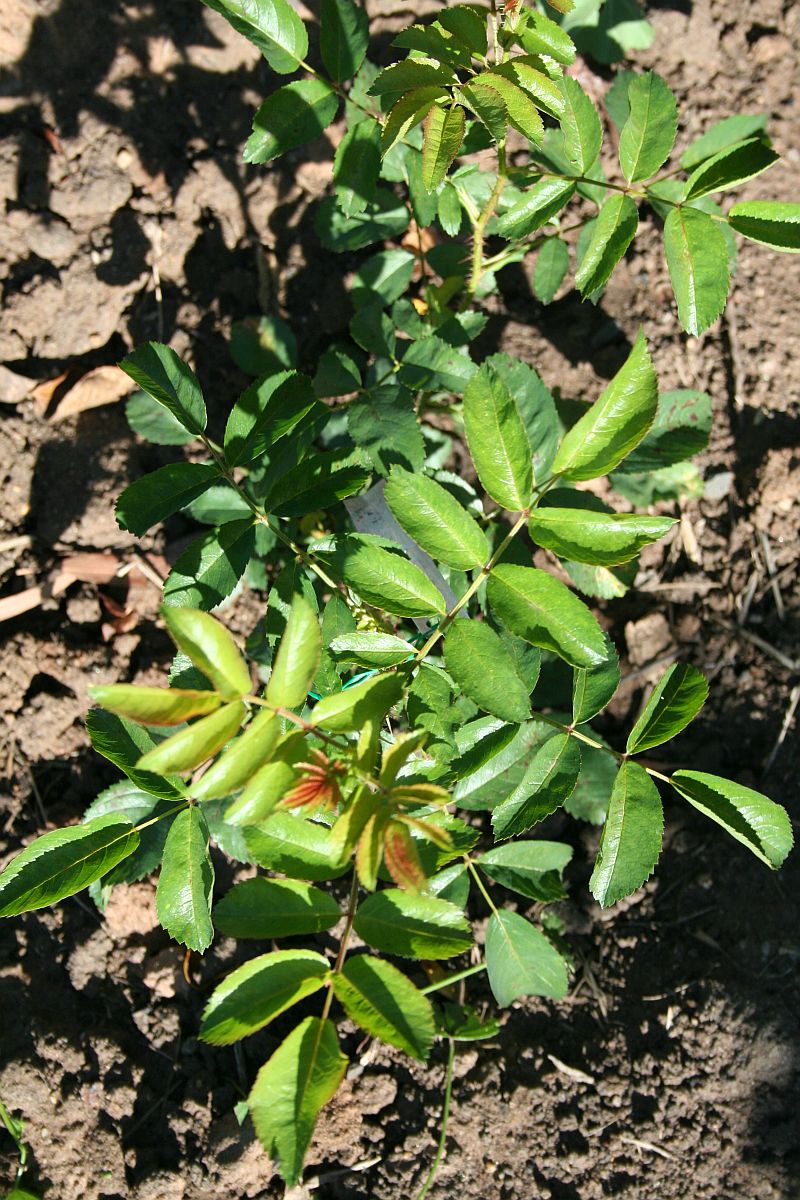A while ago I attempted to double seedlings of ‘Fru Dagmar Hastrup’ . Here is an OP seedling from it. I was testing the germination rates of the original seedling which was planted amongst trial seedlings. The first pic is the original doubled ‘Fru Dagmar Hastrup’ seedling, the second is an OP seedling from it.
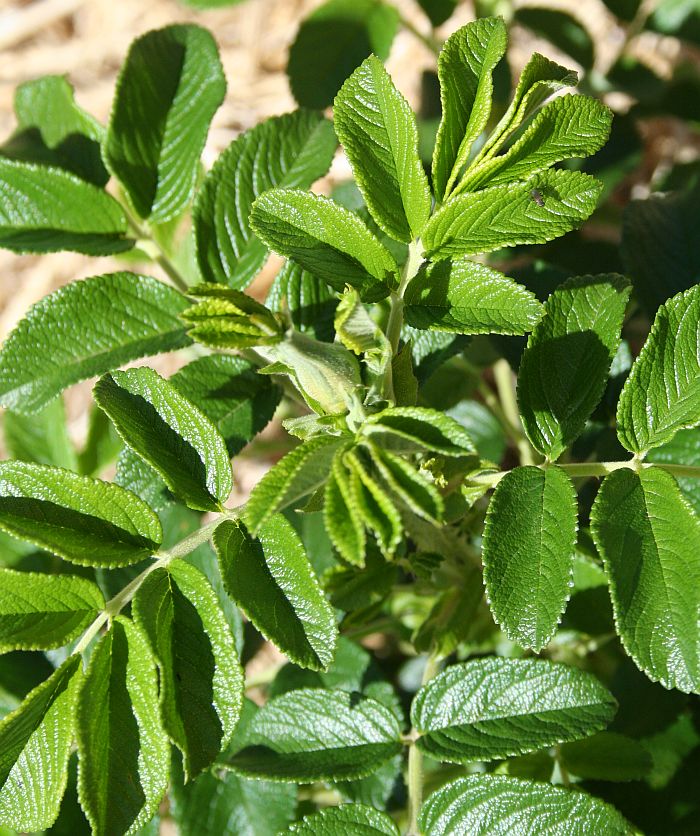
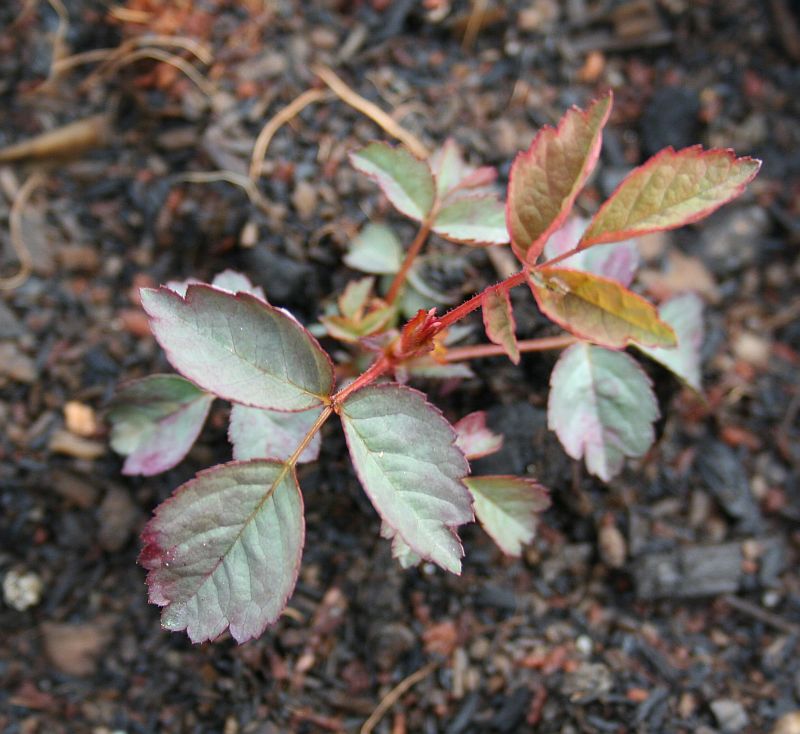
My hasty conclusion is this:
You’re treated seedling is likely a diploid. The seedling appears to be an outcrossing, which implies that the parent retains the rugosa tendency towards self-sterility. If a tetraploid plant does not have the same tendency towards self-sterility (an assumption I’m making based on vague memories) then with the amount of pollen most rugosas produce it would be unlikely to generate anything other than self-pollinated seedlings if left to its own devices.
Still fun to get OP outcrossings…its an advantage of using diploid rugosas.
Joe the ploidy of the treated rugosa has not yet be determined, Fru Dagmar Hastrup selfs look like the doubled plant. I would assume these seedlings are outcrosses.
My impressions are the same as Joe’s. My doubled rugosa has significantly wider and thicker leaflets than the diploid form.
All I can say really is that they were treated and may be doubled, the confirmation of it being doubled, is to look at the somatic chromosome count.
Three seedlings germinated from one of the treated rugosa’s . This was really a trial to test the germination rates, and the growth vigour of seedlings which were collected from OP hips. The seedlings are showing different plant structures according to what ever pollinated them.
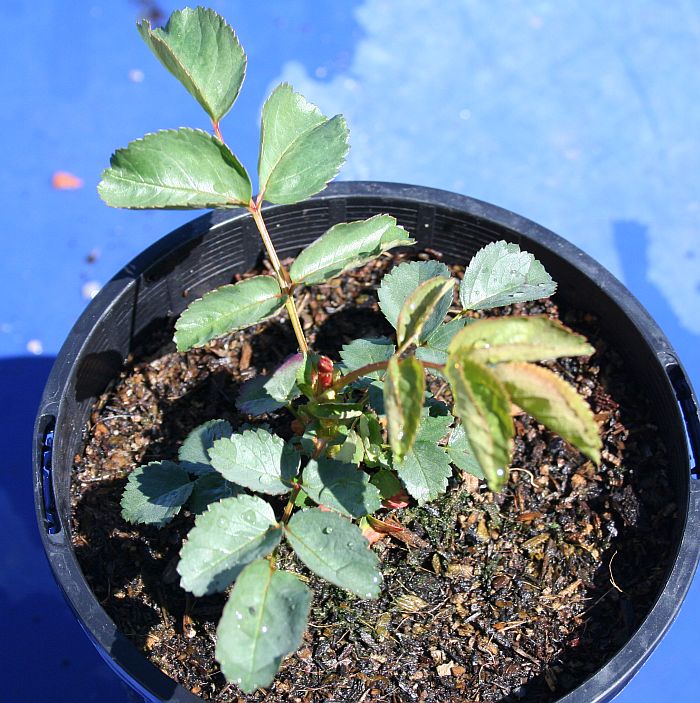
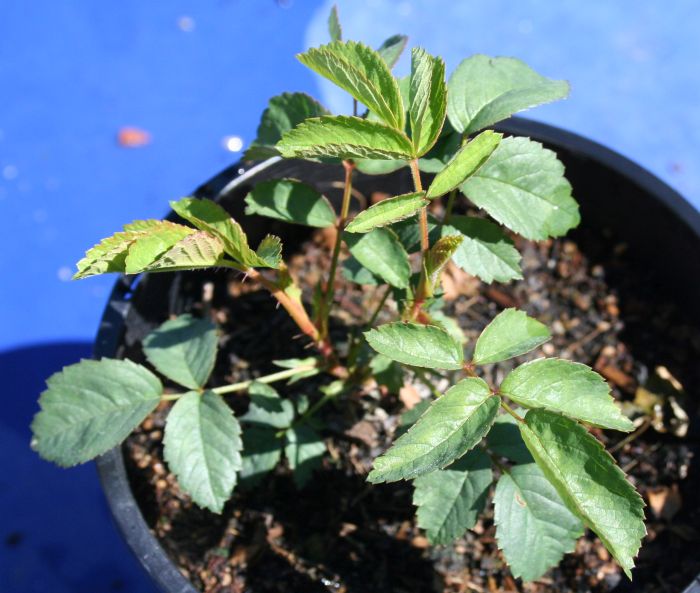
Good to see that level of variation.
Thanks JB.
Here is another of these seedling which came from OP seeds. It has been in the garden beds so its growth is a bet stronger. This is the first time I have grown Rugosa Hybrids which show a lot of vigour, they normally just sit there and do nothing for the first year. I hope this because of the treated seed parents being able to adapt to being fertilized by Tetraploid pollen.
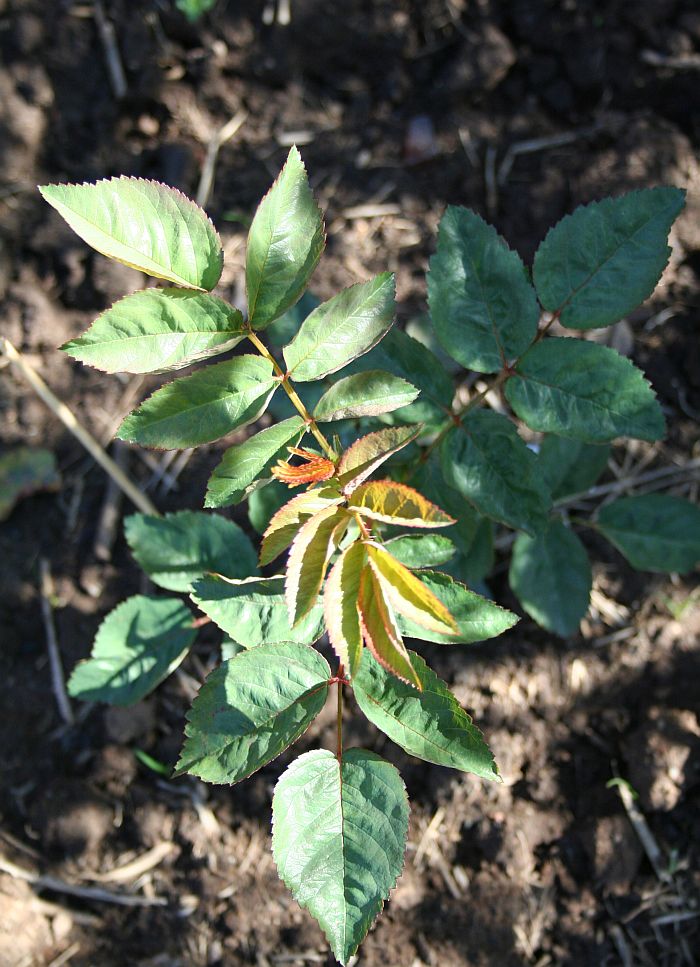
I have done numerous crosses with Rugosa’s and their growth has always be slow and sluggish. I really feel by treating Frau Dagmar Hastrup, has made it more compatible to other rose types. The growth on these seedlings has been very impressive.
Seedling O37B has the Rugosa type prickles but the leaves do not represent Rugosa at all. I can’t wait for this to get a bit bigger.
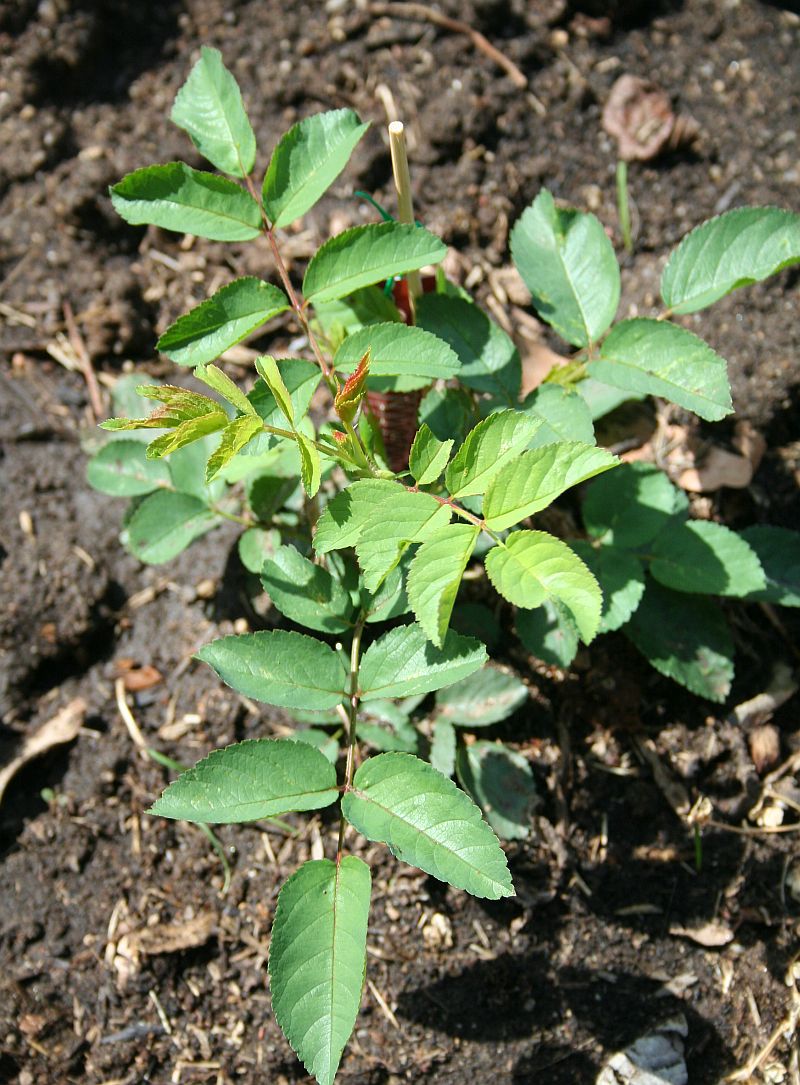
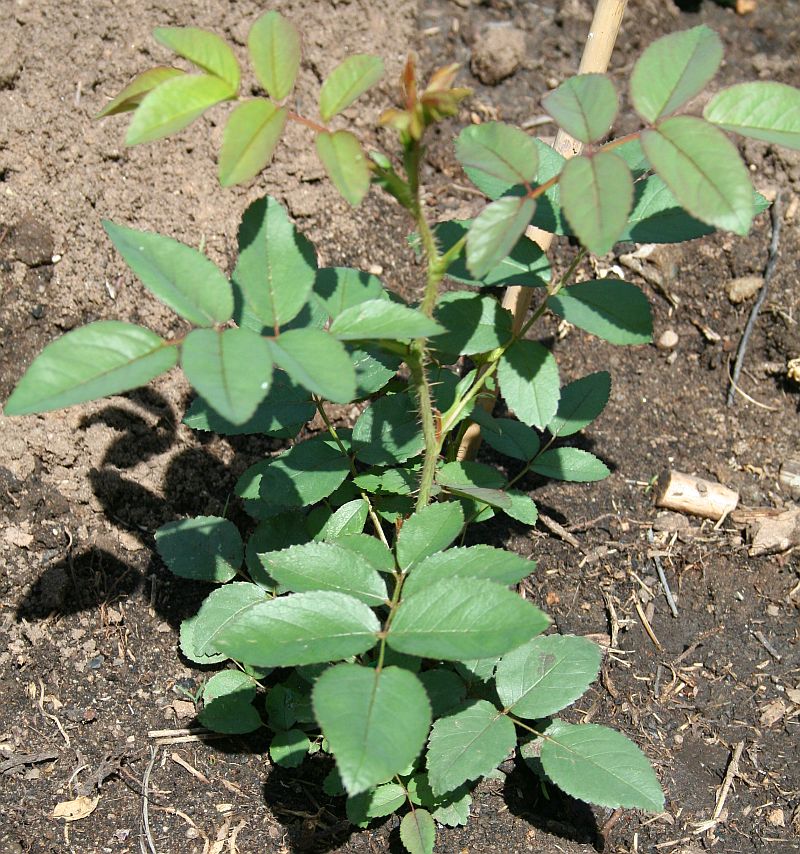
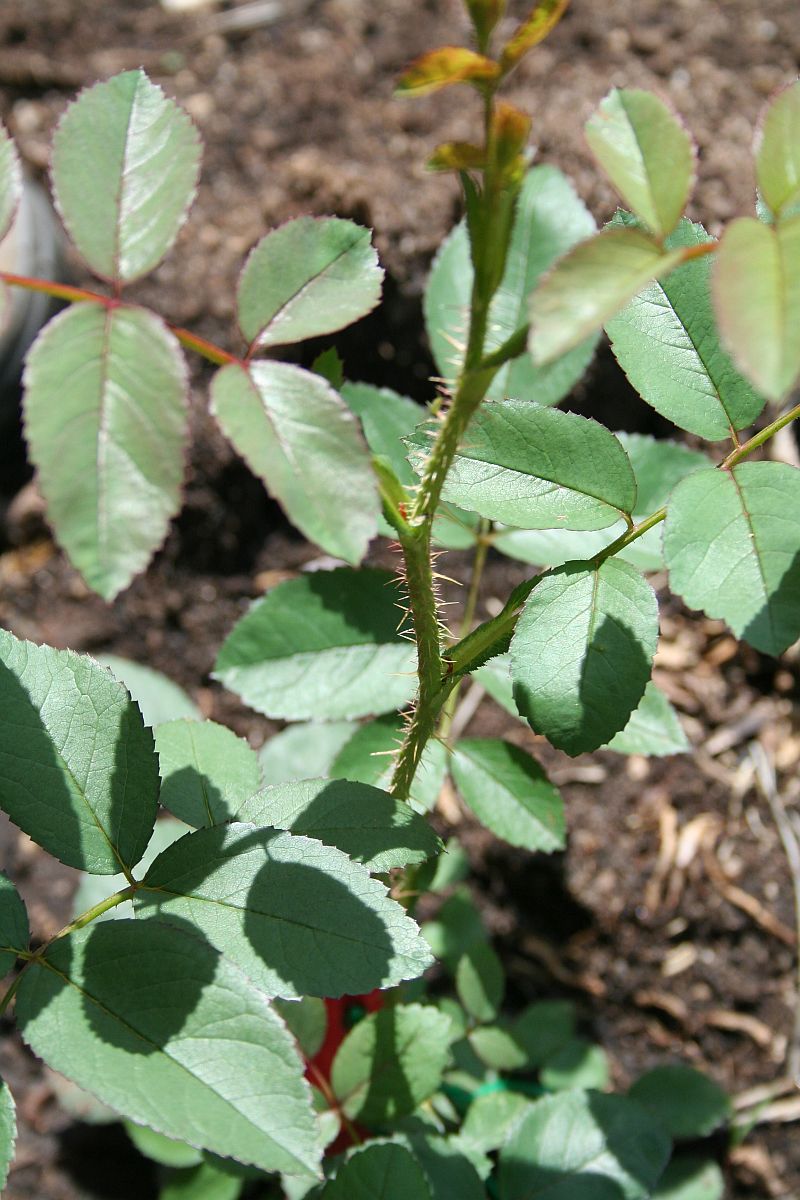
Another of the OP seedling from this treated Rugosa, growth, health and vigour is very good.
